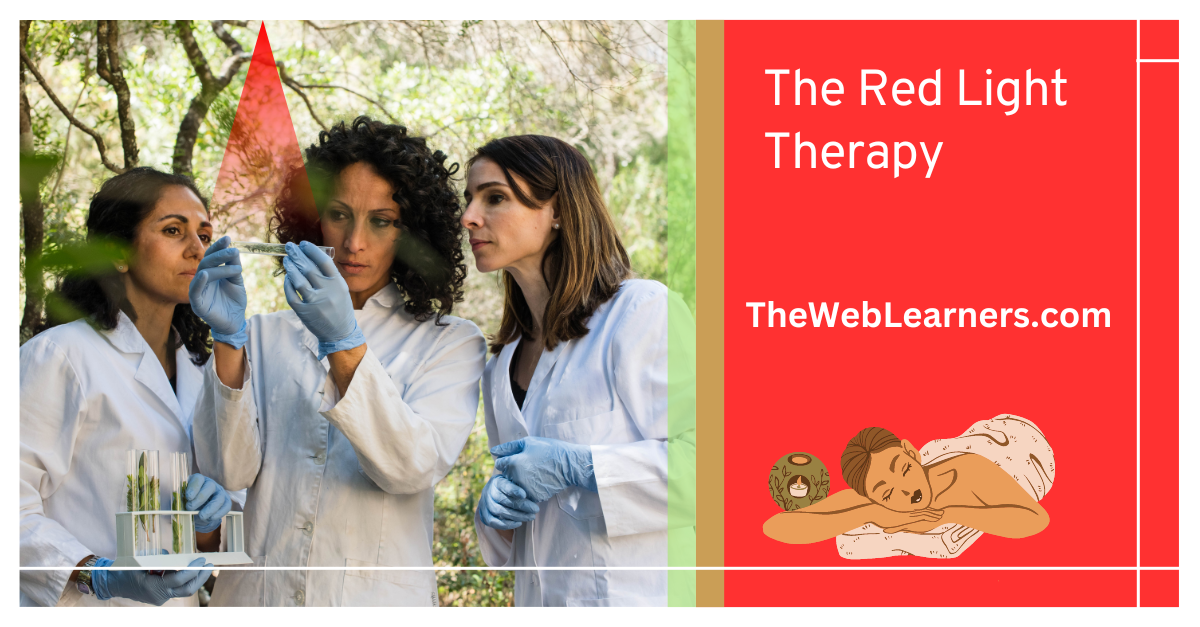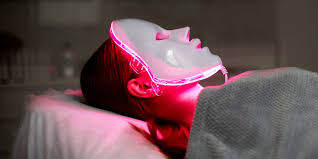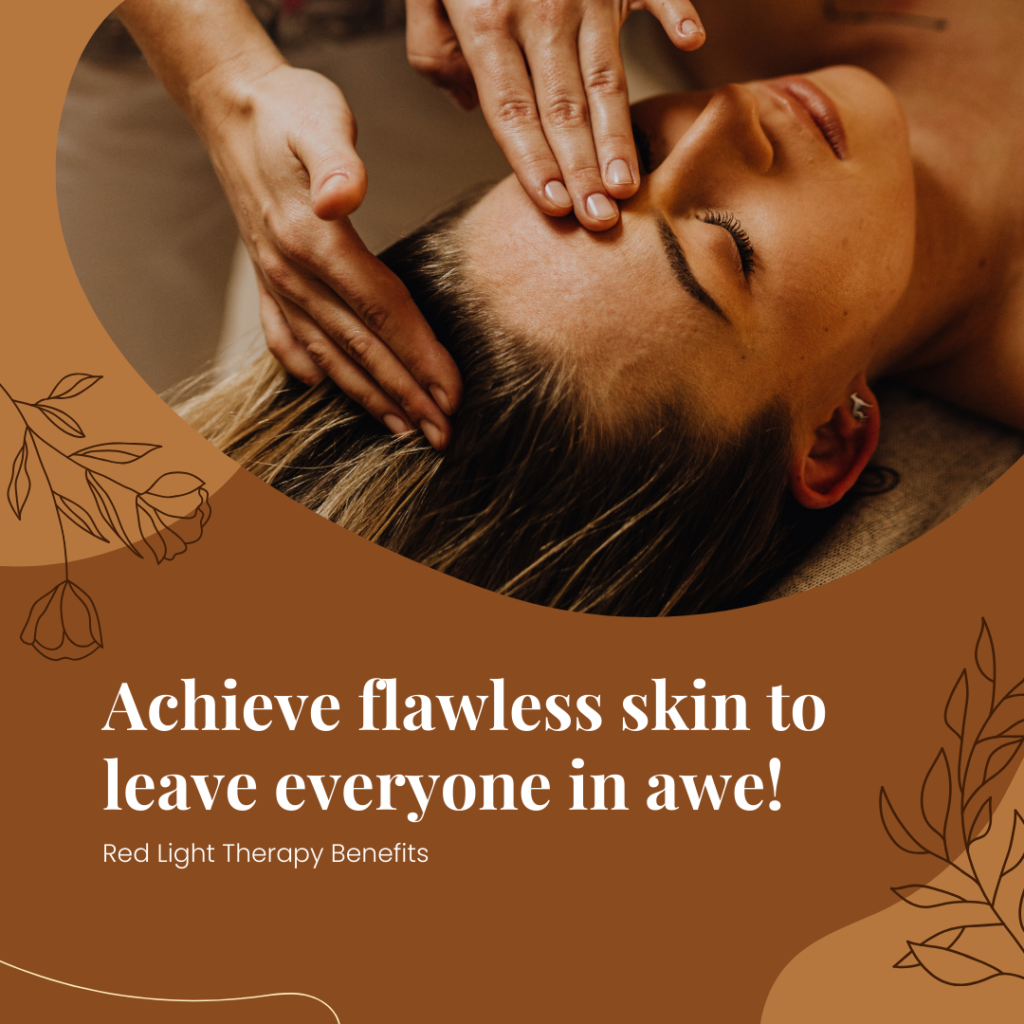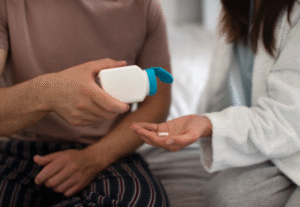
The Red Light Therapy
If you are a millennial in this Gen-Z population, and trying your best to know about every trend like Red light therapy, we have you covered. You may have seen a lot of people on YouTube, TikTok, and Instagram using a white mask that emits red light. Well, let us tell you it is just another beauty trend that promises to decrease wrinkles and acne. The effectiveness of Red light therapy (RLT) is still under thorough research.

However, the use of RLT in the medical field is not new. It has been used to treat skin cancer and psoriasis for more than a decade now. And, you would be surprised to know the effectiveness of RLT in those medical cases. So, are you ready to get a velvet-like smooth feeling on your skin? Then, keep following.
How Red Light Therapy Works
Firstly, RLT involves exposing the skin to a device that emits red light. The red light is 620- 700 nanometres (nm; billionths of a meter) in wavelength. Basically, in RLT people use a lower level of Red Light Wavelength.
After choosing the correct wavelength, the light penetrates the skin. It is absorbed by the mitochondria known as the Power-House of the Cell. By increasing mitochondrial activity, RLT enhances cellular energy production, which can improve cell function and repair. It generally boosts cell activity and forces to heal faster your skin. It is amazing. Isn’t it?

Benefits of Red Light Therapy
Most notably, it helps with wound healing and stretch marks from childbirth in addition to skin repair. Let’s take a brief look at the other advantages red light therapy offers.
Skin Conditions
RLT increases the synthesis of collagen. This is very helpful in decreasing wrinkles and increasing skin flexibility. Additionally, it has anti-inflammatory qualities that lessen Psoriasis Symptoms for Skin. As previously discussed, encouraging tissue healing helps to eliminate the appearance of scars and Stretch Marks during Pregnancy.
Inflammation and Pain
First off, RLT is quite beneficial for treating inflammation and pain in the muscles and joints. So, this treats tendinitis and arthritis. Second, it reduces the adverse effects of various cancer treatments and speeds up the healing of wounds. Radiation dermatitis and Oral Mucositis are two examples.
Read Also: The Rise of AI in Fitness and Wellness Apps
Types of Red Light Therapy Devices
We are sure that after knowing the benefits, you are now willing to know about red light therapy devices.
- Masks: Most probably, this is the one you see often on social media. This Red Light Mask is specially designed for facial treatments. These masks have red LED lights on the inside. It targets to treat acne, wrinkles, and other skin concerns.
- Beds: If you are from the early 90’s you must be familiar with tanning beds. RLT beds are used for full-body treatments and are equipped with red LED lights.
- Panels: These can be mounted on walls or tables. These also come in various sizes for targeted or full-body treatments.
- Wands: Lastly, another common device for RLT is a Handheld device. It treats small areas like the back of the hands or specific spots on the face.
Risks and Considerations
Red Light Therapy (RLT) is considered safe for most users when used properly. However, like any therapeutic treatment, there are certain risks and considerations you should keep in mind before starting.
Potential Risks:
-
Skin Burns or Blisters: Prolonged or incorrect use of RLT devices can lead to minor burns, blisters, or skin irritation. This is usually a result of using a device with too high an intensity or exposing the skin for too long.
-
Eye Safety: Direct exposure to the light, especially to the eyes, should be avoided unless you’re wearing proper protective eyewear.
-
Photosensitivity Reactions: Some individuals, especially those taking medications that cause light sensitivity, may experience adverse reactions when exposed to red or near-infrared light.
Important Considerations:
-
Consult Your Doctor: Always speak to a healthcare provider before starting RLT—especially if you have underlying conditions or are taking medications.
-
Cancer History: People with a current or previous history of cancer should be extra cautious. RLT’s effects on cancerous cells are still being researched, and its safety in such cases has not been firmly established.
-
Cost and Insurance: While RLT devices are more accessible now, they are usually not covered by insurance. This means you’ll likely pay out of pocket, so consider your budget before committing.
In summary, while RLT offers many benefits, using it safely under medical supervision is essential, especially if you have specific health concerns.
Also Read: Top AI tools in Healthcare for Professionals in 2025
Conclusion
No doubt that red light therapy offers a promising, noninvasive method for the betterment of your skin scars. It helps to improve skin health, reducing pain and inflammation, and promoting hair growth. However, more research is necessary to fully understand its effectiveness and long-term safety. You must consult a healthcare professional before starting RLT. It is to ensure that your specific needs are met. So, when are you stepping forward to take care of yourself?
FAQs
1. What are people saying about red light therapy on Reddit?
On Reddit, users often discuss their personal experiences with red light therapy for skin improvement, pain relief, and muscle recovery. Many report positive effects after consistent use over a few weeks, especially for acne, fine lines, and joint pain. However, results vary, and some are sceptical about overhyped claims.
2. Can you do red light therapy at home?
Yes, red light therapy at home is very popular and accessible. Devices range from handheld wands to full-body panels. Home-use devices are generally safe when used according to the manufacturer’s instructions. Many people use them for skin care, hair growth, and muscle recovery in the comfort of their home.
3. What are the benefits of red light therapy?
Red light therapy benefits include:
-
Improved skin tone and texture
-
Reduced fine lines and wrinkles
-
Faster wound healing
-
Reduced inflammation and joint pain
-
Muscle recovery and performance boost
-
Improved circulation
It is non-invasive and generally considered safe for regular use.
4. Are there any dangers to red light therapy?
While RLT is safe for most, dangers include:
-
Skin burns or irritation may occur if used incorrectly
-
Eye damage without protective eyewear
-
Possible interactions with light-sensitive medications
Always consult a healthcare provider before starting, especially if you have underlying conditions.
5. What is a red light therapy mask?
A red light therapy mask is a wearable LED device designed to target the face. It uses red and near-infrared light to stimulate collagen production, reduce acne, and improve skin clarity. Most masks are safe for at-home use and take around 10–20 minutes per session.
6. Where can I find red light therapy near me?
To find red light therapy near you, check local:
-
Dermatology clinics
-
Physical therapy or wellness centres
-
Gyms with recovery rooms
-
Medical spas or aesthetic clinics
Search online with terms like “red light therapy near me” or use Google Maps for accurate listings and reviews.
7. Can red light therapy cause cancer?
There is no evidence that red light therapy causes cancer. In fact, it uses low-level, non-ionising light, which does not damage DNA. However, if you have a history of cancer, consult your doctor first, as the safety of RLT in cancer patients is still being researched.
8. What are the typical red light therapy before and after results?
Before and after results vary, but many users report:
-
Smoother, clearer skin
-
Reduced acne or scarring
-
Less joint or muscle pain
-
Improved sleep and energy
Noticeable results often appear after 4–8 weeks of consistent use, depending on the condition treated.






